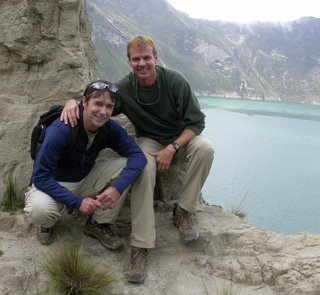We have been outside Los Estados Unidos for for 4 weeks now, which is the longest that Gary has ever been away. And boy we are getting homesick. But I guess that is a sure way to really appreciate all the things we take for granted, from physical safety to reliable plumbing. The last time I was outside the U.S. for an extended period of time, I was 20. I definitely think it´s a young man´s game, when it´s easier to deal with discomfort and sometimes unpleasant surprises. I´m really happy we did not put off this type of travel outside the tourist bubble until some undetermined period of "retirement."
Two weeks from tomorrow, we will have a ten-day return to the tourist bubble. Our sailing trip around the Galapagos Islands will be a all-pampered, all-gringo affair. Until then, we will be leaving Quito for a river journey into Ecuador´s Amazonia, followed by visits to some other active volcanoes, of which Ecuador seems to have an endless supply. -- Rick




